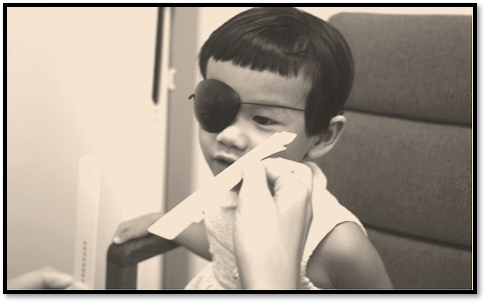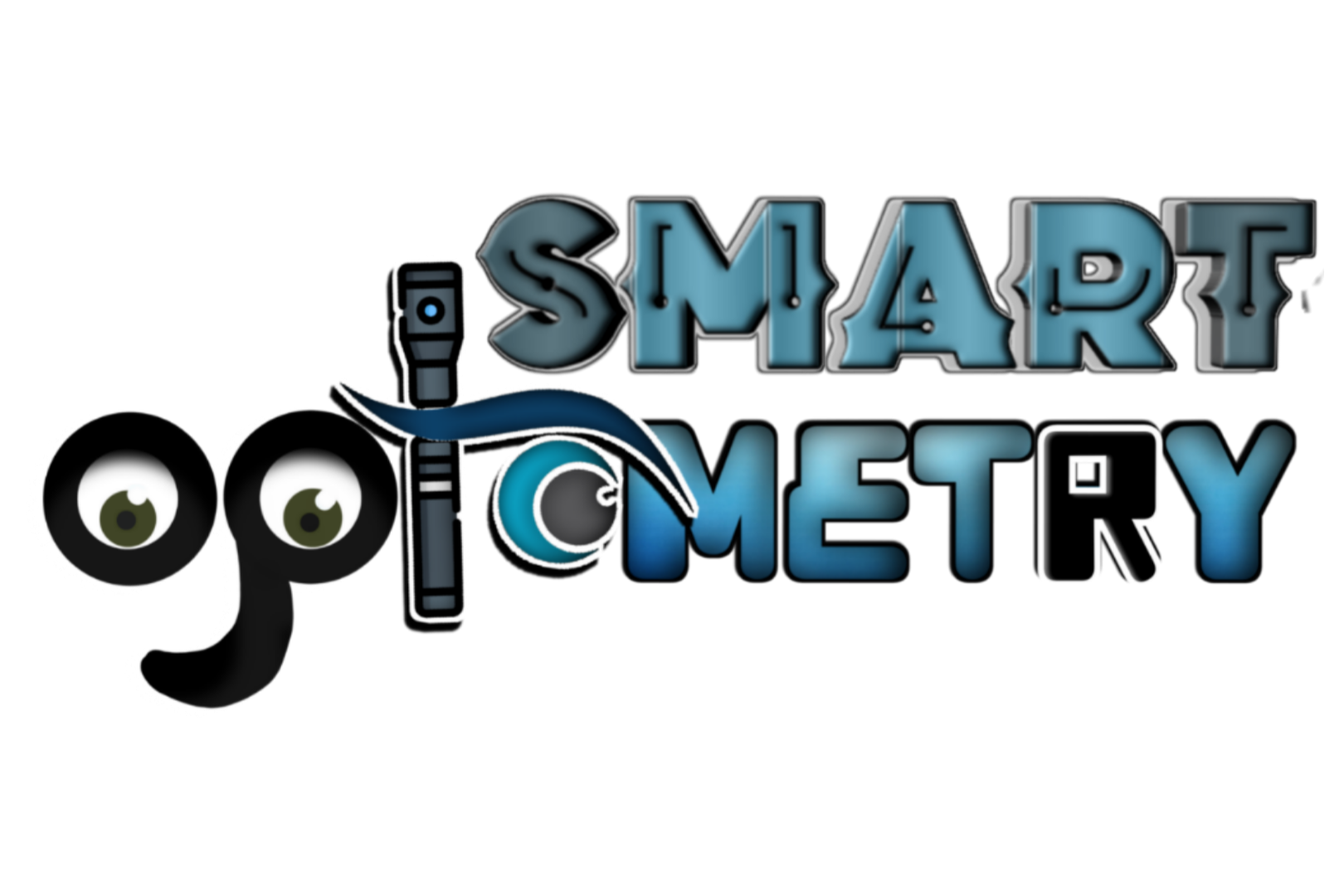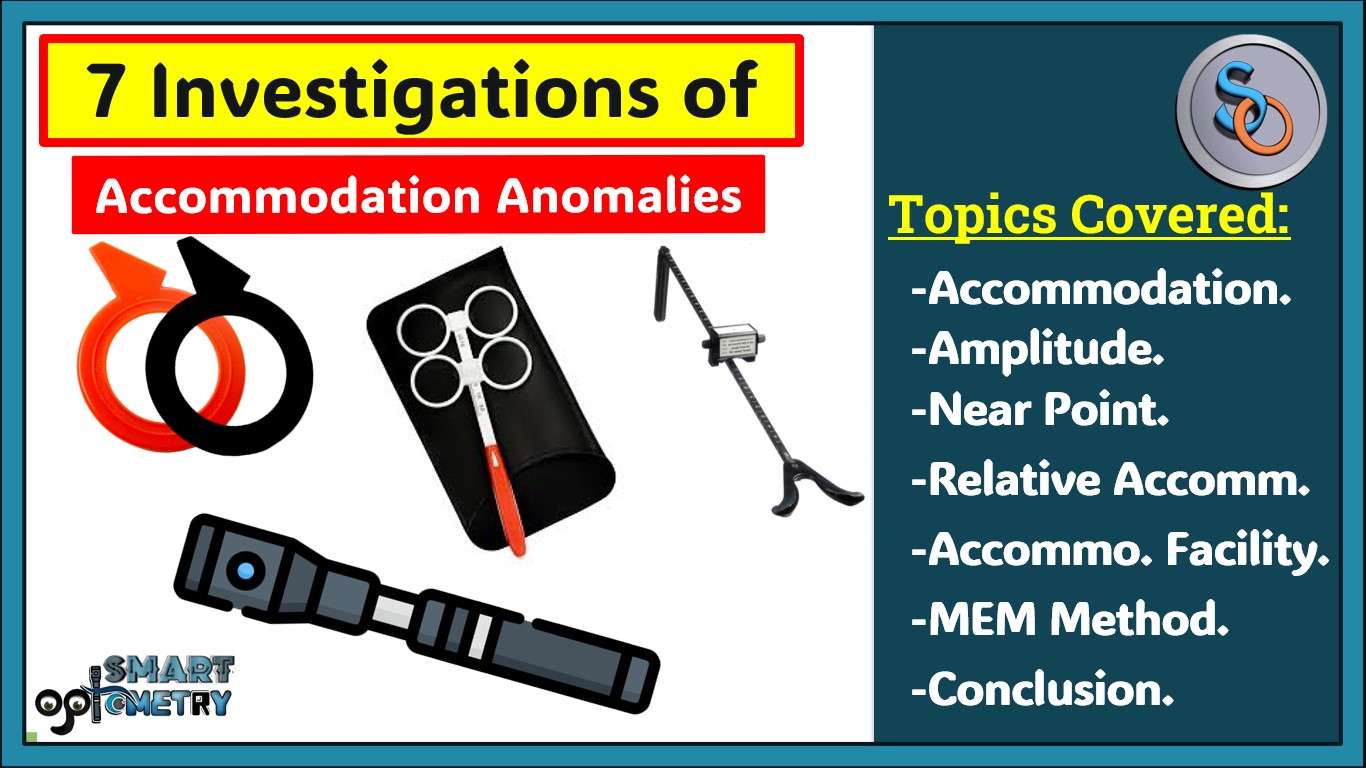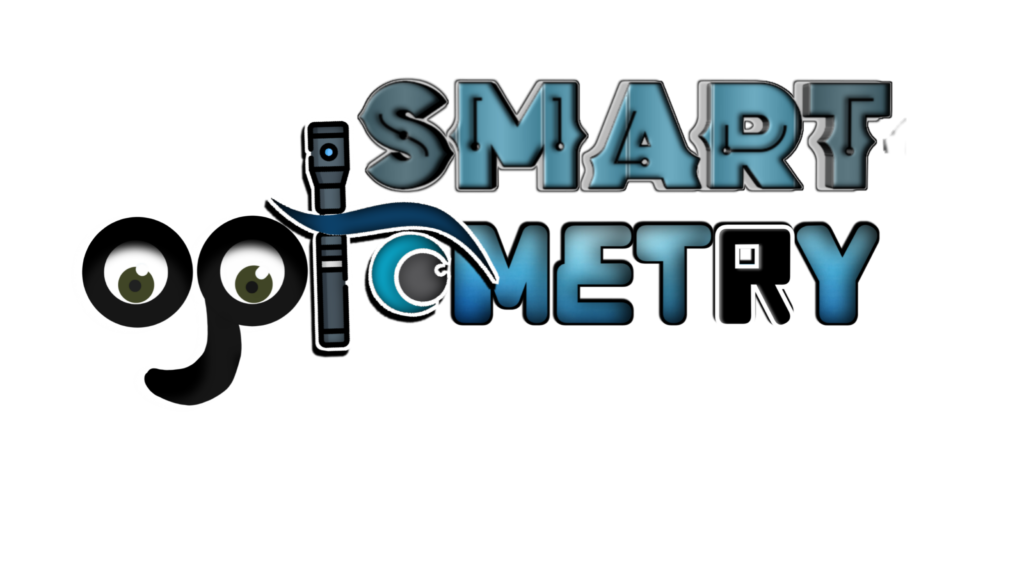What is Accommodation of Eyes:
Accommodation is the mechanism by which the eye changes refractive power by altering the shape of lens in order to focus objects at variable distances (from near point to far point).
What is Accommodation Anomaly?
- When our eyes are not able to produce required amount of accommodation or may procedure required amount of accommodation but can’t maintain or facilitate as needed is called Accommodation Anomalies.
- Anomalies of accommodation can be due:
- Lower Accommodation than the required (AI),
- Higher Accommodation than the required (AE),
- Normal Accommodation but not able maintain for long (IA).
- Accommodation can’t facilitate required distances (AIF).
- The most common Accommodation anomalies are:
- Accommodation Insufficiency.
- Ill sustain Accommodation.
- Accommodation Excess.
- Accommodation Infacility.
- The tests that help to diagnose these anomalies are:
- Amplitude of Accommodation.
- Near Point of Accommodation.
- Negative Relative Accommodation.
- Positive Relative Accommodation.
- Monocular Accommodation Facility.
- Binocular Accommodation Facility.
- MEM: Monocular Estimated Method.
Outcome of 7 Tests for Accommodation Anomalies:
- All these 7 tests help us to identify 3 conditions of accommodation status:
- Normal AOA.
- Low AOA.
- High AOA.
1. Normal AOA:
- When AOA is normal here are 2 possibilities:
- There is no Accommodative Anomalies.
- AOA is normal but not able to sustain for long period time that is called “Ill-sustain Accommodation”
2. Low AOA:
- When AOA is low here are 2 possibilities:
- Low AOA indicate that eye can’t exert required amount of accommodation that is required that is called “Accommodation Insufficiency”
- Low AOA also indicate that eyes can’t facilitate required accommodation at various distances that is called “Accommodation Infacility”
3. High AOA:
- High AOA indicating that eyes exerting more accommodation than required that is called “Accommodation Excess”
Test-1 & 2: Amplitude of Accommodation & Near Point of Accommodation:
- For a specific age group, we can identify the amplitude of accommodation and then match with patient’s AOA to identify whether the patient is having:
- Normal AOA.
- Low AOA.
- High AOA.
Hofstetter’s Formula:
- Normal AOA: 18.50 – (0.3 X Age)
- Maximum AOA: 25 – (0.4 X Age)
- Minimum AOA: 15 – (0.25 X Age)
How to measure Amplitude of Accommodation:

- AOA can be simply measured by asking the patient to focus at a near target (Readable).
- Then push the target closer to the patient till patient reports first sustain blur (NPA).
- Now measure the Near Point of Accommodation (distance from lateral canthus to the target) in centimeters.
- Then AOA can be identified by using the formula: AOA = 100/ NPA in cm
- Conclusion: First identify the patient AOA from NPA and then identify the normal value of AOA for this age group by using Hofstetter’s formula to identify whether patient is having:
- Normal, Low or High AOA.
Test- 3 & 4: Negative Relative Accommodation/Positive Relative Accommodation:
- NRA/PRA is performed in patient with full correction fixating at near readable target at 40cm.
- When patient is fixating at 40cm, plus lens is added in +0.25D increment till target become sustain blur that is called Negative Relative Accommodation.
- When patient is fixating at 40cm, minus lens is added in -0.25D increment till target become sustain blur that is called Positive Relative Accommodation.
- Now, at 40cm we need accommodation of 100/40 or 2.5D to see any object.
- Patients with normal Accommodative status will comfortably relax or induce accommodation of 2.5D and will see the target.
- But Patient with accommodation excess will face difficulty in clearing plus lens and NRA value will be less than +2.5D.
- Patient with accommodative insufficiency, will face difficulty in clearing minus lens and PRA value will be less than -2.50D.
- So based on NRA/PRA value:
- Low NRA = High AOA
- Low PRA = Low AOA
- Normal NRA/PRA = Normal AOA
Test-5 & 6: Monocular & Binocular Accommodation Facility:
- In Accommodation facility test, patient is asked to clear plus and minus lens of equal power one after another (1 cycle) while focusing on a near readable target.
- Common power used are: +/- 0.50, +/- 0.75, +/- 1.00, +/-1.25, +/-1.50, +/-1.75, +/-2.0, +/-2.25, +/-2.50, +/-2.75, +/-3.0.
- When perform monocularly, it’s called Monocular Accommodation Facility Test and when perform Binocularly, it’s called Binocular Accommodation Facility Test.
- Patient with normal accommodative status will easily clear both plus and minus lens (More cycle in minute).
- Patient with Accommodation Anomalies will take more time to clear either plus or minus lens (less cycle per minute).
- Based on NRA/PRA:
- Difficulty in Clearing Plus lens: High AOA.
- Difficulty in Clearing Minus lens: Low AOA.
- No Difficulty in Plus/Minus lens: Normal AOA.
Test-7: Monocular Estimated Method:
- Monocular Estimated Method is performed with a streak retinoscope while patient is fully corrected and focusing at retinoscopic light, or a readable target attached to retinoscope.
- Then reflex is observed through retinoscope.
- Patient with normal accommodative status, reflex will be neutral or slight with movement (up to 0.75D).
- Patient with Accommodation Excess, reflex will be against (low MEM value).
- Patient with Accommodation Insufficiency, reflex will be high with movement (more than 0.75D)
- Based one MEM:
- Very Low MEM: Accommodation Excess (Lead)
- High MEM: Accommodation Insufficiency (Lag)
- Neutral to Low MEM: Normal Accommodative Status.
- Check Our Courses: Ophthalmic Instrumentation, Clinical Refraction, Contact Lens, Binocular Vision, Dispensing Optics, MCQs in Optometry
- Download our App “Optometry Notes & MCQs” from Google Play Store.




